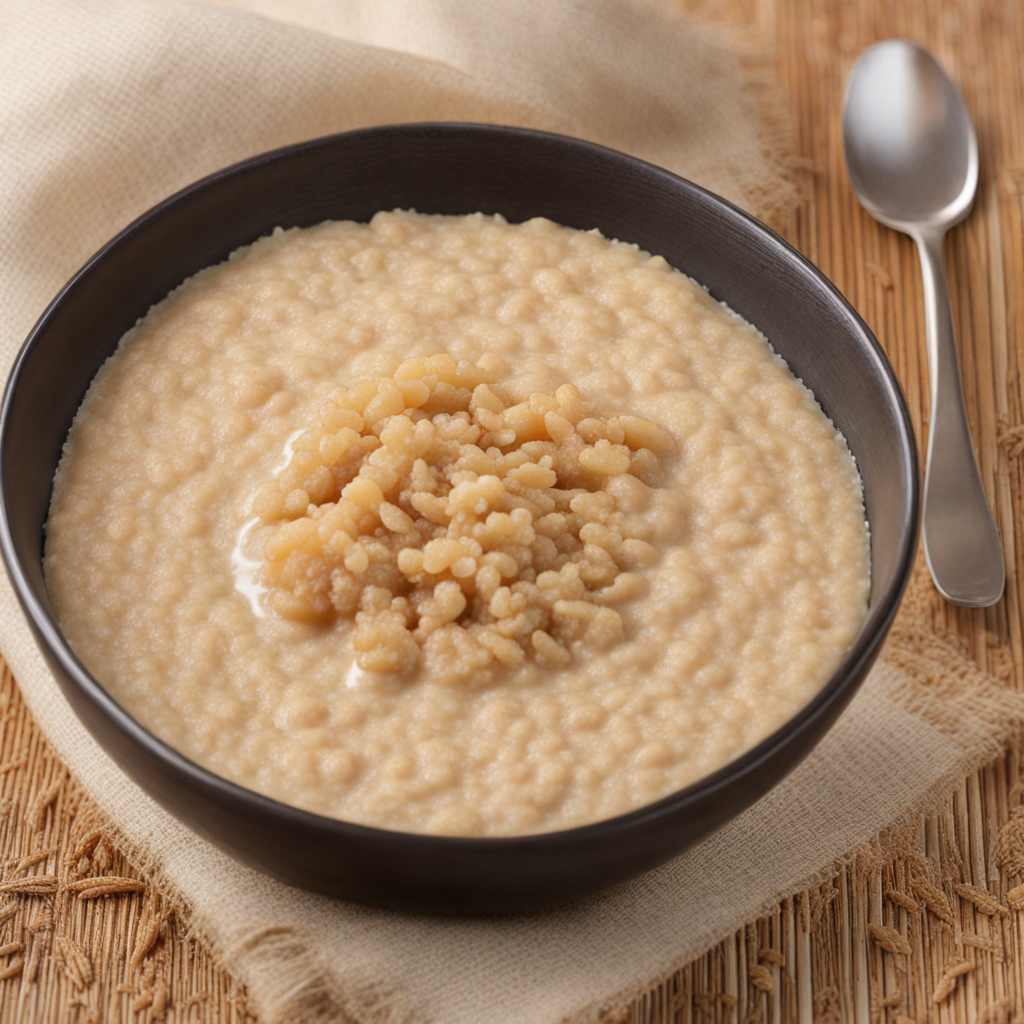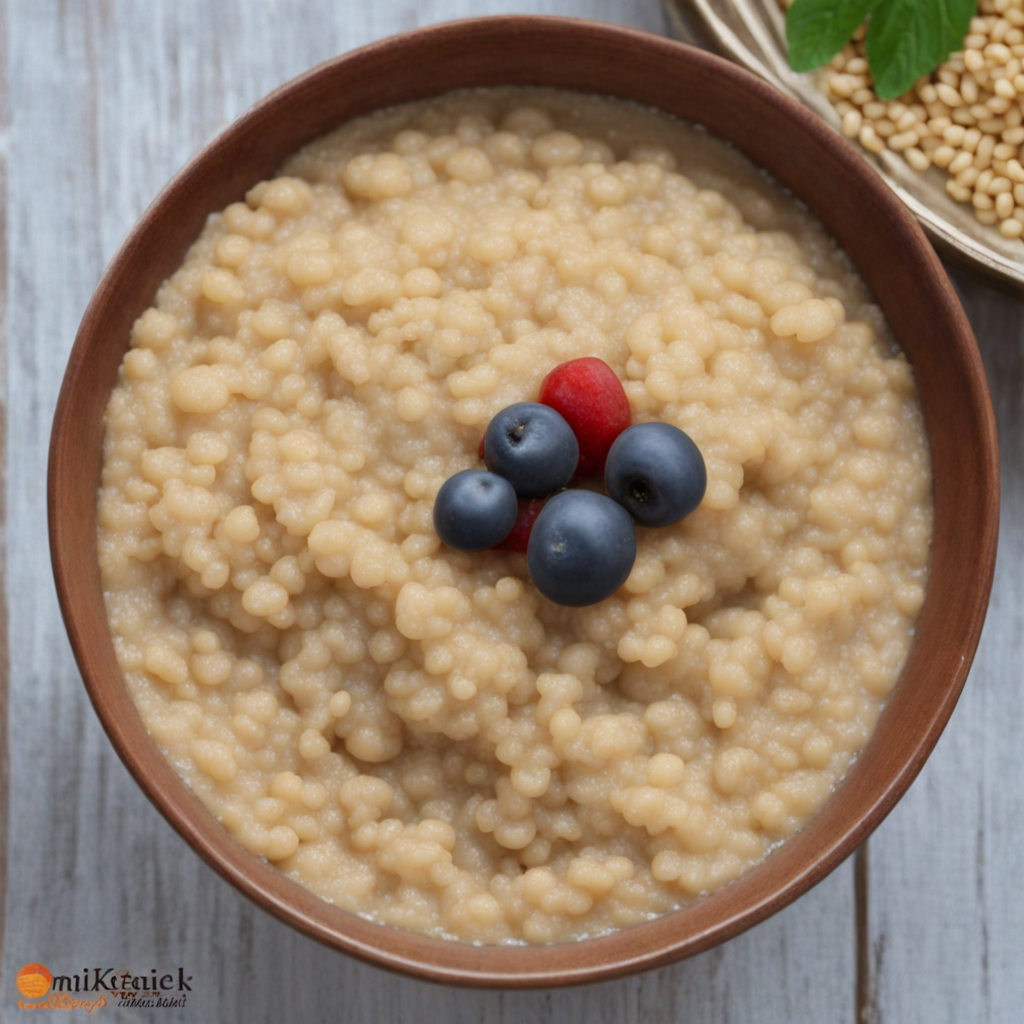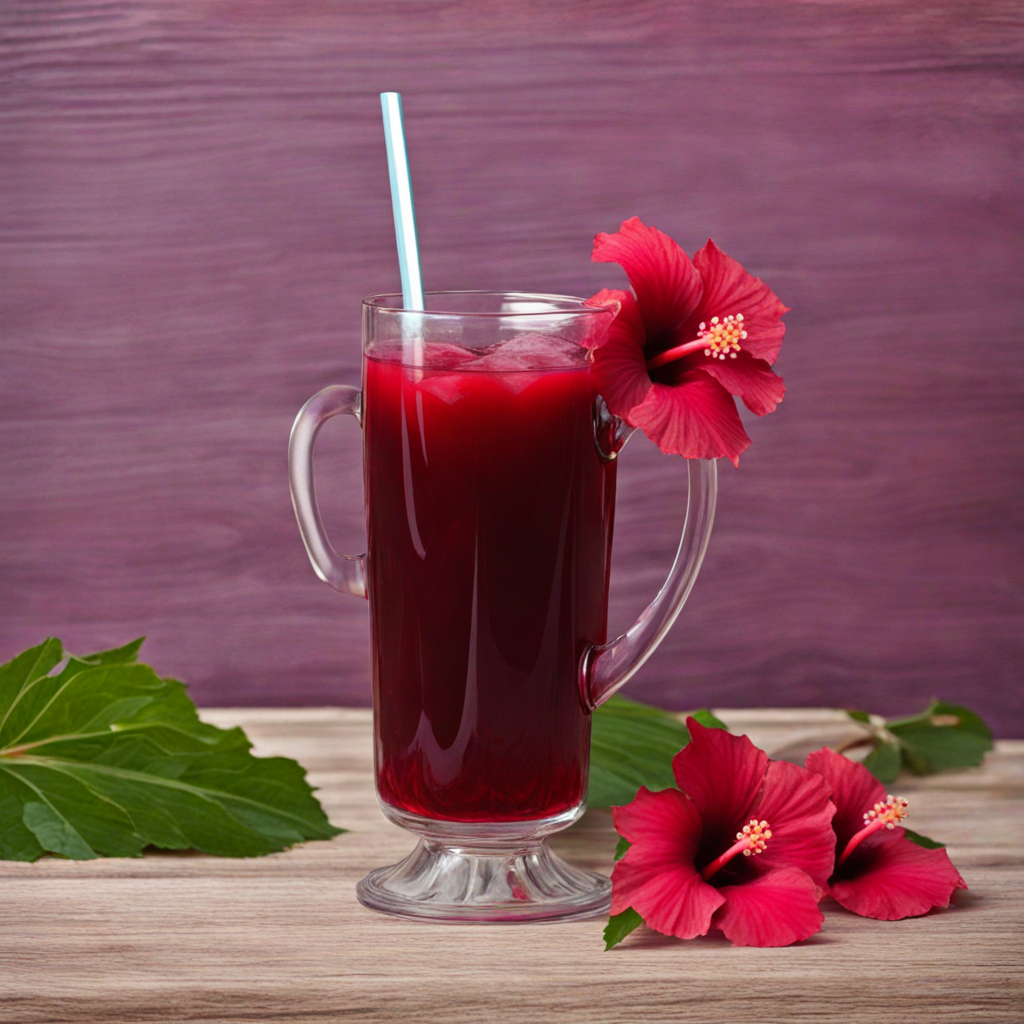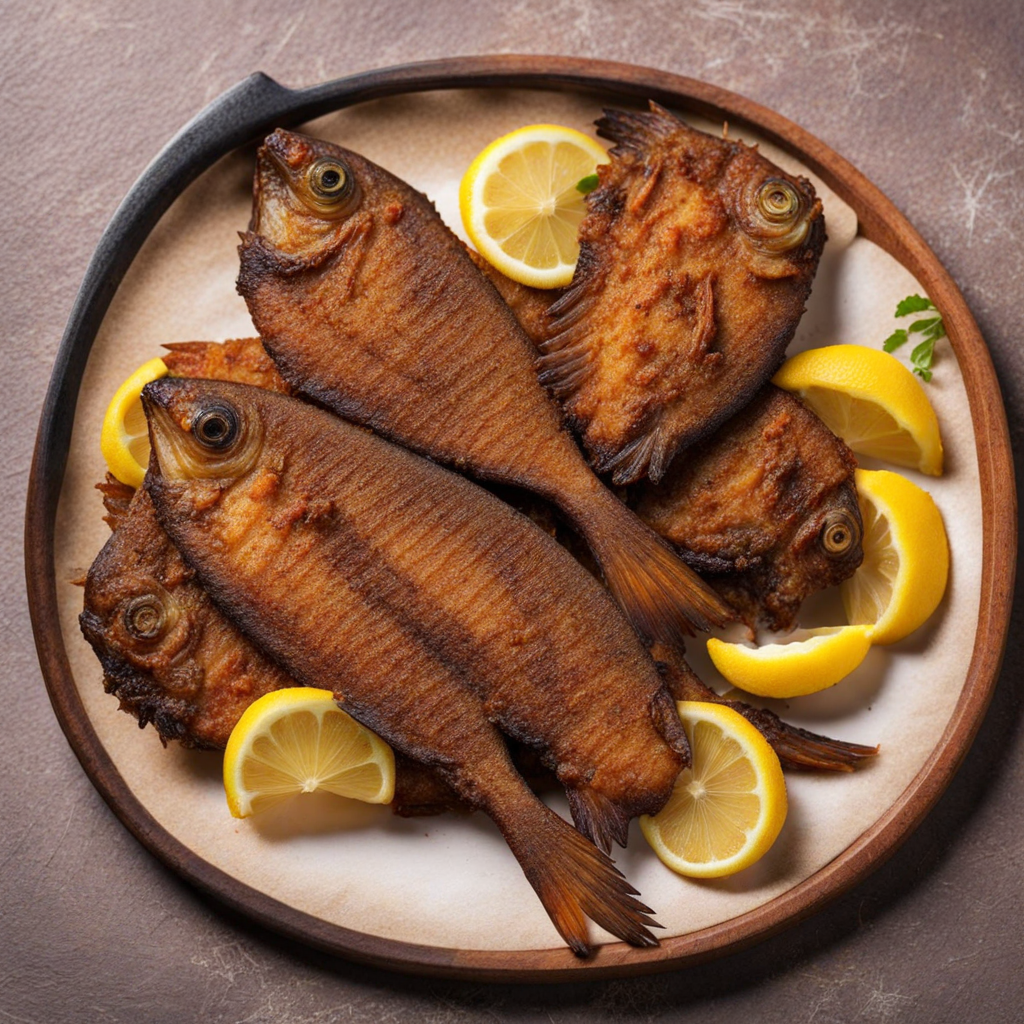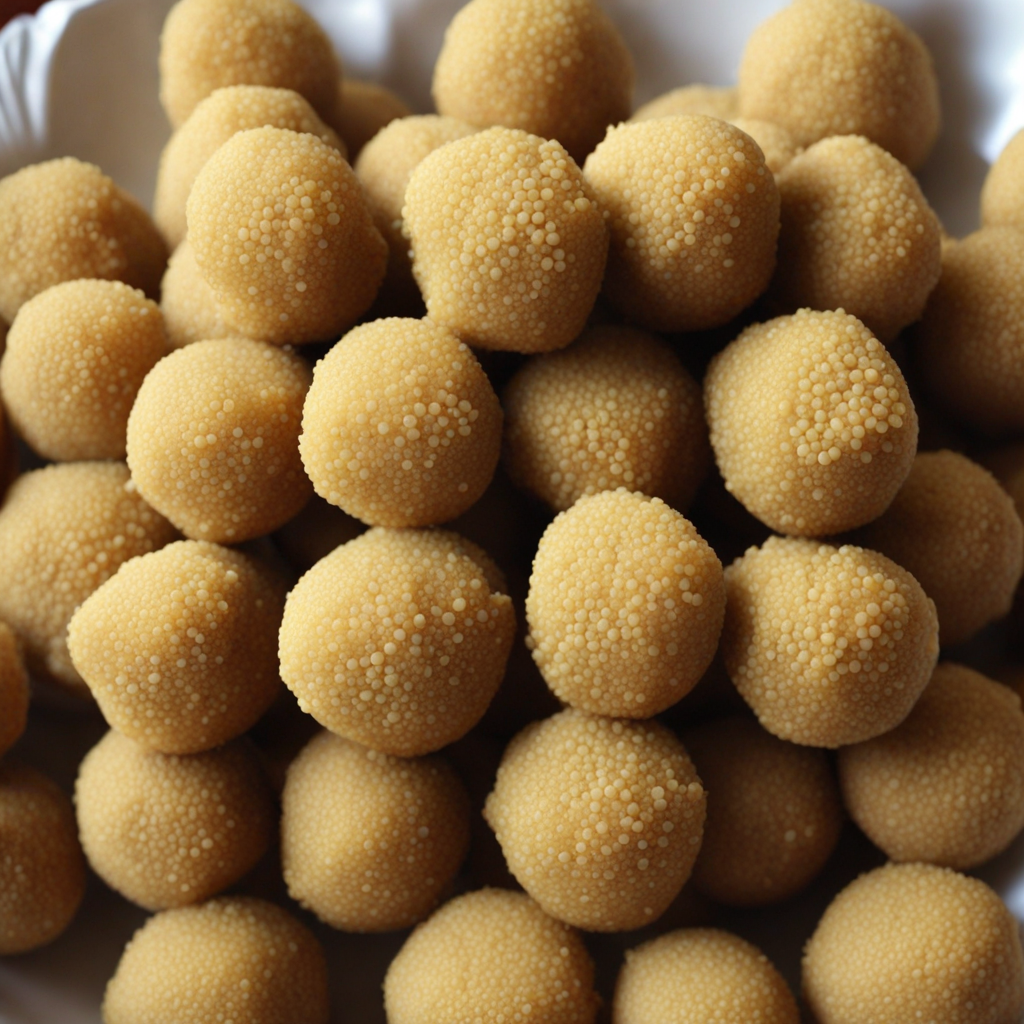Millet Porridge
Fura is a traditional dish from Niger, often celebrated for its nutritional value and rich cultural significance. This dish consists primarily of millet or sorghum, which are staple grains in the Sahel region of West Africa. Fura is not just a food item; it is a representation of the rich agricultural heritage and cultural practices of the communities that have thrived in this arid landscape for centuries. Historically, Fura has roots that can be traced back to the indigenous people of the region, particularly among the Fulani and Hausa communities. These groups have relied on millet and sorghum as primary sources of sustenance due to their resilience in harsh climates. Fura has evolved over the years, maintaining its status as a staple food while also adapting to modern culinary practices. Traditionally, it has been consumed during communal gatherings, celebrations, and ceremonies, symbolizing hospitality and togetherness. The flavor profile of Fura is subtly earthy and slightly nutty, reflecting the natural qualities of the grains used. When prepared properly, it has a pleasant chewy texture that can be both satisfying and hearty. Fura is often enjoyed with a variety of accompaniments, such as spicy sauces, yogurt, or milk, which can enhance its flavor and create a delightful contrast. The addition of these toppings makes it versatile, allowing for a customization of taste that appeals to a wide range of palates. Preparation of Fura involves a meticulous process that begins with soaking the millet or sorghum grains. Once softened
How It Became This Dish
The Rich History of Fura: A Culinary Gem from Niger Fura, a traditional food from the Sahel region, particularly Niger, is a remarkable dish that embodies the culinary heritage of the West African people. This staple food has origins that trace back centuries and serves not only as a source of nourishment but also as a vehicle for cultural expression and community bonding. #### Origins of Fura Fura is made primarily from millet or sorghum, grains that have been cultivated in the Sahel region for thousands of years. The history of these grains is intertwined with the agricultural practices of the nomadic and sedentary communities that have inhabited the region. Millet, for instance, is known for its resilience in arid climates and was one of the first domesticated crops in West Africa. Its cultivation has allowed communities to thrive despite the challenging weather conditions, making it a cornerstone of the local diet. The preparation of fura involves grinding the grains into flour, mixing it with water, and then shaping it into small balls or dough-like pieces. Once formed, these pieces are typically boiled or steamed, resulting in a chewy texture that is both satisfying and nutritious. Fura is often accompanied by a spicy sauce, such as a peanut or tomato-based dip, which enhances its flavor and provides a balanced meal. The word "fura" itself is derived from the Hausa language, a major language in Niger and surrounding countries, reflecting the linguistic and cultural influences in the area. The recipe has been passed down through generations, preserving the traditional methods while allowing for regional variations. #### Cultural Significance Fura is more than just food; it is a symbol of identity and cultural heritage for the people of Niger. It is often prepared during significant life events, such as weddings, festivals, and communal gatherings, thus reinforcing social ties and community togetherness. The preparation and sharing of fura can be seen as a communal activity that brings families and neighbors together. In many Nigerien households, making fura is a communal affair. Women, who traditionally bear the responsibility of food preparation, gather to grind the grains, prepare the sauce, and cook the fura. This collective effort fosters relationships among participants and strengthens the community fabric. Fura also has a spiritual aspect; it is often part of rituals and ceremonies that mark important life transitions. In some cultures, it may be offered to ancestors or served during religious events, reflecting the deep respect for heritage and tradition among the people. #### Development Over Time As Niger has evolved over the centuries, so too has the preparation and consumption of fura. In ancient times, it was primarily a food for the rural communities, but with urbanization and globalization, fura has found its way into cities and into the diets of people from various backgrounds. The advent of modern technology has also impacted the preparation of fura. While traditional methods are still cherished, the introduction of mechanized milling and cooking techniques has made the process more efficient, allowing for a faster production of fura. However, many families still prefer to prepare fura using time-honored methods, as they believe that this preserves the authentic taste and texture of the dish. Moreover, globalization and migration have led to a fusion of culinary practices. Fura is now sometimes served with international sauces or paired with foods from different cultures, reflecting the dynamic nature of food as a medium of exchange. For instance, while the traditional accompaniment is often a local spicy sauce, some may serve it with yogurt or even curry, showcasing the adaptability of this beloved dish. In recent years, there has been a renewed interest in traditional foods like fura, spurred by a global movement towards eating local and organic foods. As people become more aware of the health benefits associated with traditional grains like millet and sorghum, fura has gained recognition not just as a staple food, but as a superfood rich in nutrients. Its high fiber content, coupled with beneficial vitamins and minerals, positions it as a healthy alternative to more processed foods. #### Fura Today Today, fura continues to be an essential part of Nigerien cuisine and is celebrated in various forms across the region. While the traditional recipes remain popular, new variations have emerged, appealing to younger generations and urban dwellers. Street vendors often sell fura as a quick snack or meal option, making it accessible to those who may not have the time or resources to prepare it at home. Fura's popularity has also transcended borders, with diasporic communities embracing and promoting it in different parts of the world. This has led to a greater appreciation of Nigerien culture and cuisine on an international scale. Food festivals and cultural events often feature fura, allowing individuals from diverse backgrounds to experience and enjoy this unique dish. Furthermore, the modern culinary landscape has seen an explosion of interest in indigenous foods, with chefs and food enthusiasts experimenting with local ingredients and traditional recipes. Fura has found its place in contemporary cuisine, often being reimagined in innovative ways while still honoring its roots. #### Conclusion Fura is more than just a dish; it is a testament to the resilience and creativity of the people of Niger. Its rich history, cultural significance, and evolution over time reflect the broader narrative of West Africa's culinary heritage. As it continues to adapt and thrive in an ever-changing world, fura remains a beloved staple that connects generations, fosters community, and celebrates the enduring spirit of Nigerien culture. Whether enjoyed at a bustling market, during a family gathering, or at a fine dining establishment, fura is a culinary gem that represents the heart and soul of Niger.
You may like
Discover local flavors from Niger


